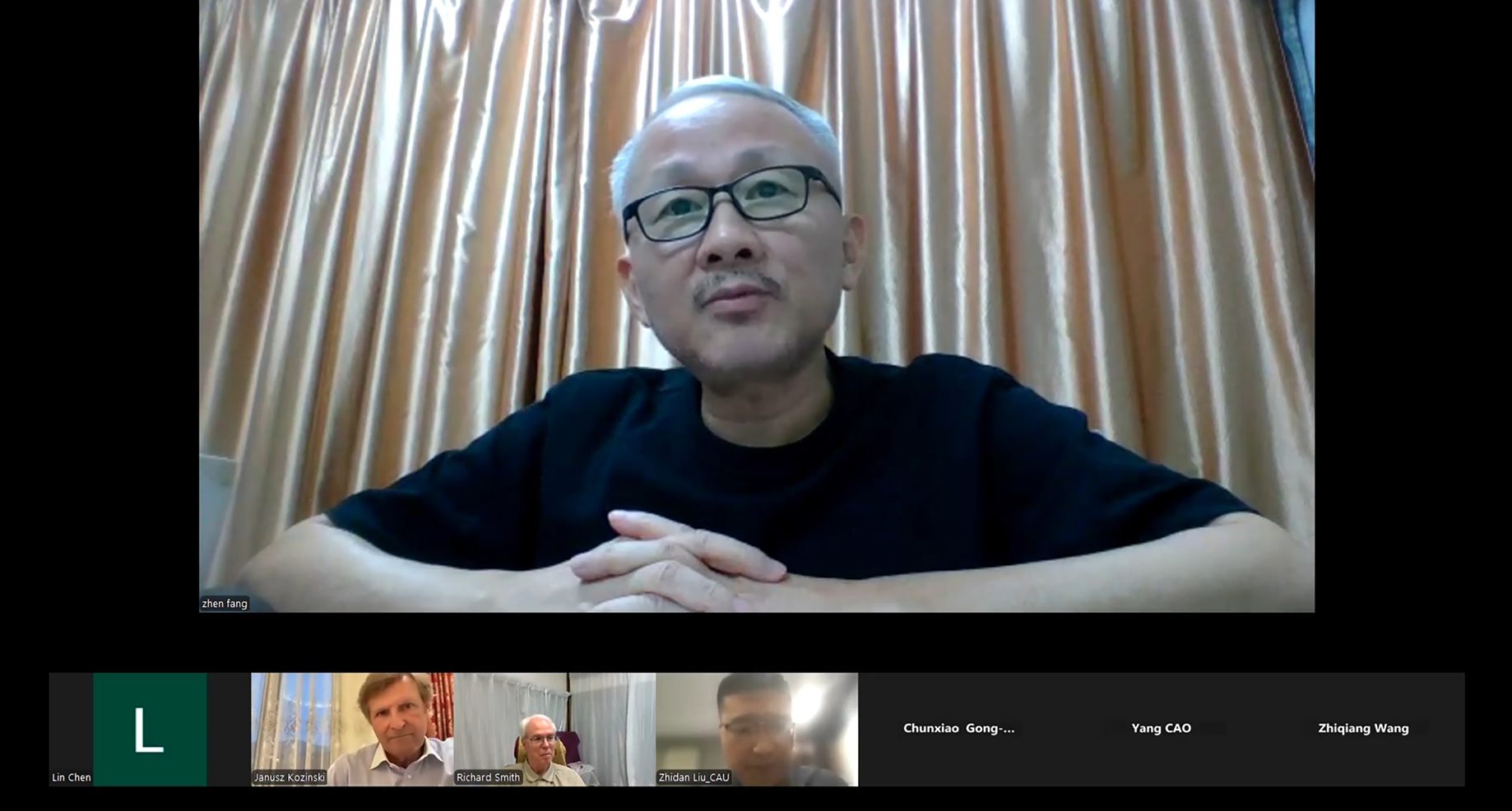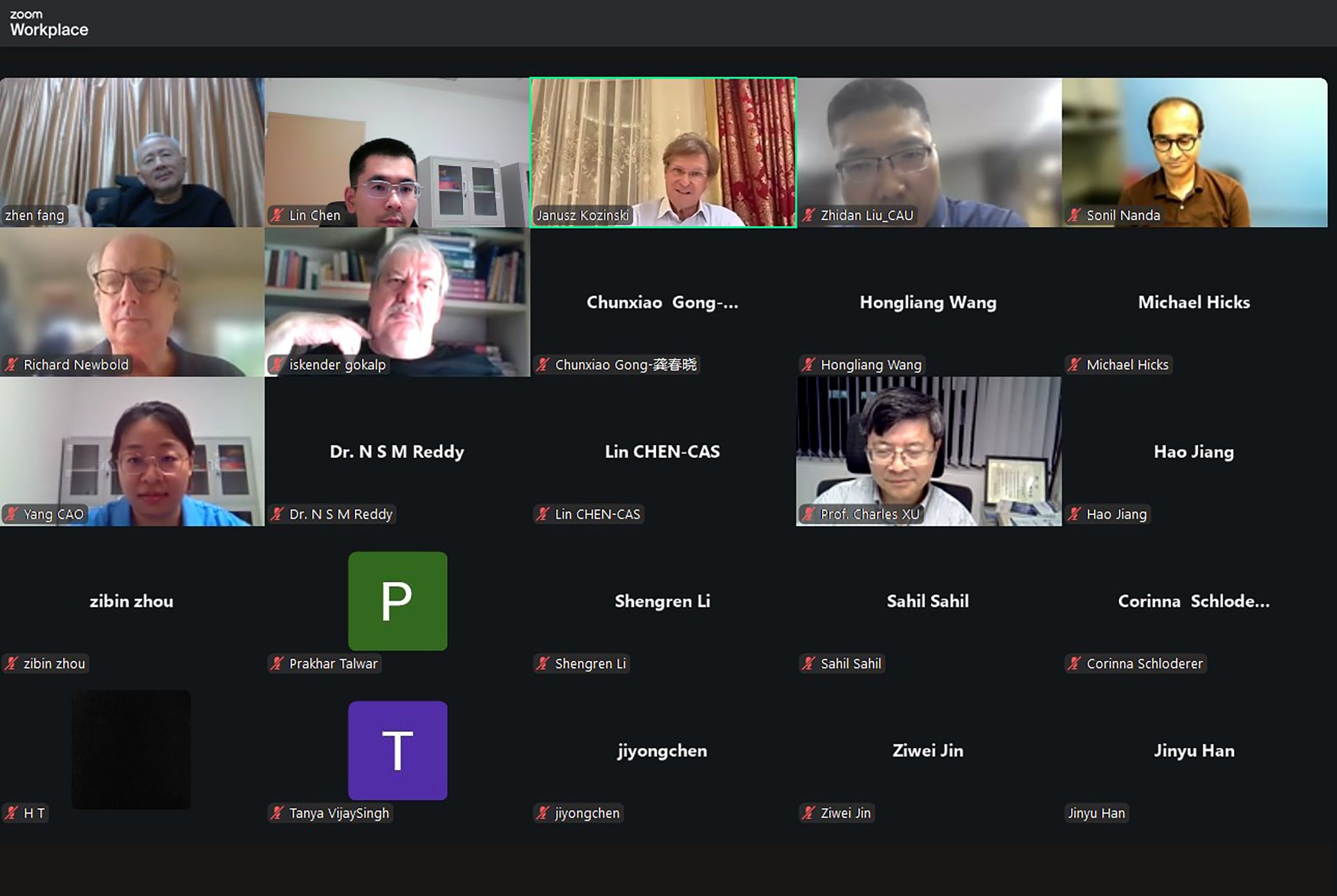国际会议NJAU – International Virtual Conference on Sustainable Processing of Biomass and Biogenic Matter
星期四, 14 8 月, 2025
Profs. Richard Smith and Janusz Kozinski (Smith教授和 Kozinski院士)
NJAU – International Virtual Conference on Sustainable Processing of Biomass and Biogenic Matter
Sustainable processing of biomass is one of the driving forces in the 21st century for generating carbon-neutral biofuels and multi-functional bioproducts. The International Virtual Conference dedicated to this field provides crucial platforms for exchanging ideas and disseminating knowledge regarding innovative technologies. These technologies focus on converting various biomass resources into biofuels, biochemicals, and biomaterials, while simultaneously fostering positive socio-economic impacts. The Conference served as a forum to present, discuss, and debate global and local challenges, opportunities, and future novel processes in this rapidly evolving sector.
Organization Committee
Chair: Professor & Dean Janusz A. Kozinski (Fellow of the Canadian Academy of Engineering, FCAE), Lakehead University, Canada
Co-chair: Professor Zhen Fang (FCAE), Nanjing Agricultural University, China
Secretaries: Nanjing Agricultural University Associate Prof. Yang Cao and Dr. Lin Chen
Online Meeting Screenshot

Prof. Zhen Fang and other experts (方老师和专家们)

Experts and Guests (专家和嘉宾)

Questioning (提问)
Details can be seen:
Video link:
https://www.bilibili.com/video/BV17Cb8zqEJN/?vd_source=4434644631de05400f9175161d843d8b
Lectures:
- Hydrothermal technology for sustainable food-energy-water nexus
Prof. Zhi-dan Liu (China Agricultural University, Beijing)
- Fundamentals of Solvothermal and Hydrothermal Fluids for Biomass Valorization
Prof. Richard Smith (Tohoku University, Japan)
- Sugar-platform biorefinery: catalytic conversion of carbohydrates into platform chemicals
Prof. Charles Xu (City University of Hong Kong)
- Hydrothermal carbonization of highly wet organic waste streams: a sustainable circular economy approach from sewage sludge to SAF
Prof. Iskender Gokalp (Middle East University, Turkey)
- Lignin-Based Micro/Nano Systems for Pesticide Encapsulation and Controlled Release
Prof. Hongliang Wang (China Agricultural University)
- Comprehensive investigation of hydrogen generation from agricultural residues by supercritical water gasification process
Prof. Ajay Dalai (USAK, Canada) together with Dr. Kapil Khandelwal
- Focused Perspectives on Waste Valorization, Net Zero Targets and Decarbonization
Dr. Sonil Nanda (Canada research Chair, tier 2, Dalhousie, Canada)
- SCW gasification of organic wastes: batch versus continuous processing (a multi-university journey from lab world to real world)
Dr. Richard Newbold (Supercritical-H2O, USA)
- In-situ hydrothermal gasification of waste towards circular economy
Prof. Mohan Reddy (IIT-Roorkee, India)
- Supercritical carbon dioxide assisted dissolution/extraction and heat transfer characteristics of the mixture fluid flow
Prof. Lin Chen (Chinese Academy of Sciences)
- Open Forum – Discussion
Chaired by Prof. Janusz A Kozinski and Prof. Zhen Fang
南京农业大学成功举办“生物质可持续利用国际在线会议”
生物质资源的可持续加工是21世纪推动碳中和生物燃料及多功能生物制品发展的核心驱动力之一。为促进该领域前沿成果交流,2025年8月12日,由南京农业大学主办的“生物质可持续资源利用国际在线会议”成功召开。本次会议聚焦“生物质和生物质特性物质的可持续处理”主题,旨在搭建国际交流平台,分享创新技术,探讨未来发展。
会议由加拿大湖首大学Janusz A. Kozinski院士和南京农业大学方真院士共同担任主席。会议汇聚了来自加拿大、美国、印度、日本、法国、中国香港及内地的顶尖学者,围绕如何高效转化各类生物质资源为生物燃料、生物化学品和生物材料,以及相关的全球性、区域性挑战、机遇和未来创新流程等议题,进行了深度研讨。南京农业大学曹阳副教授和陈林博士共同担任大会秘书。会上,十位国际知名专家带来了精彩纷呈的学术报告:中国农业大学刘志丹教授、日本东北大学Richard Smith教授、香港城市大学Charles Chunbao Xu院士、土耳其中东大学Iskender Gokalp教授(法国国家科学研究中心CNRS燃烧研究所前所长)、中国农业大学王洪亮教授、加拿大萨斯喀彻温大学Ajay Dalai院士、加拿大戴尔豪斯大学Sonil Nanda助理教授(加拿大国家青年讲席教授)、美国超临界水公司Richard Newbold博士、印度理工学院鲁基分校Mohan Reddy教授、中国科学院工程热物理研究所陈林教授等,各位报告人分享了他们在生物质处理领域的最新研究进展与突破。会议尾声,Janusz A. Kozinski院士和方真院士共同主持了开放研讨会,与会专家学者就热点问题展开了热烈讨论。
演讲录像:
https://www.bilibili.com/video/BV17Cb8zqEJN/?vd_source=4434644631de05400f9175161d843d8b
NJAU – Virtual Conference – 12 August 2025 – Program Signatures